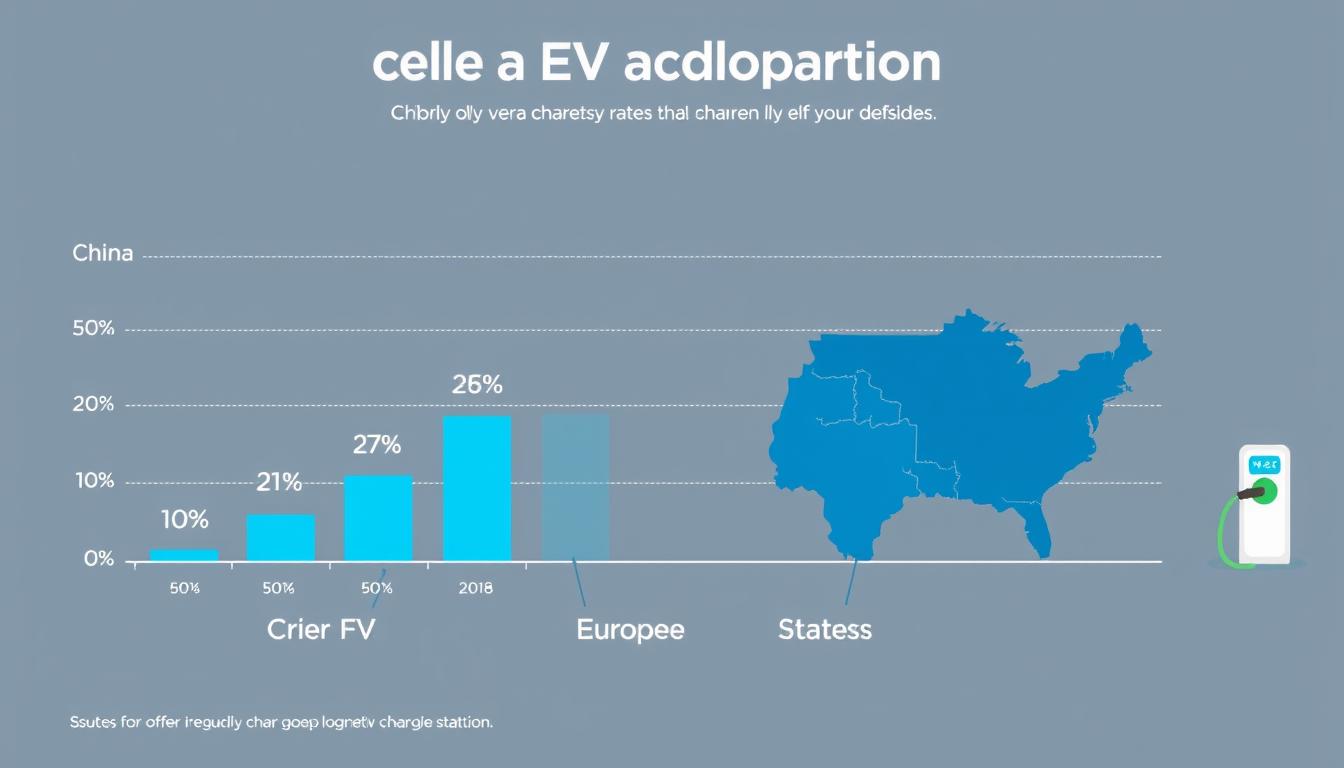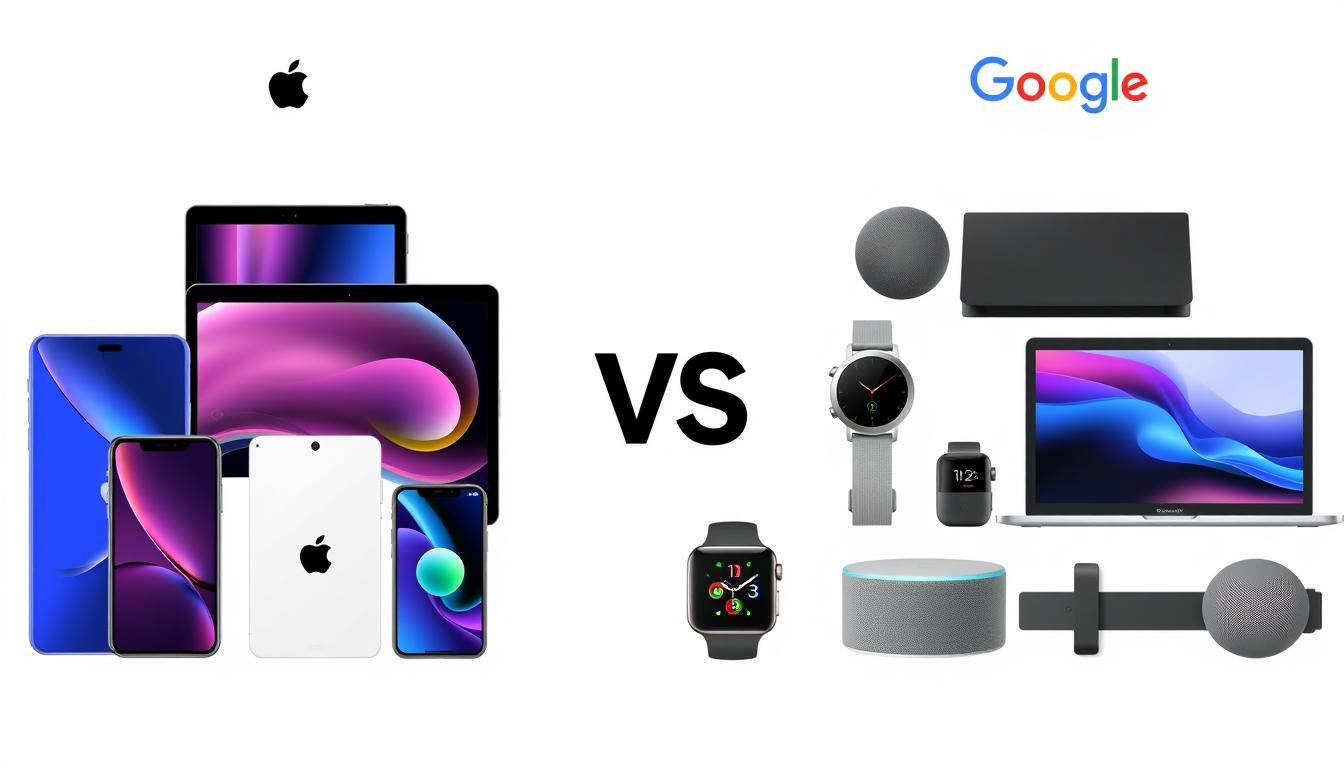What does it take to turn leather handbags and floral fragrances into cornerstones of a multinational dynasty? For decades, one conglomerate has redefined exclusivity through meticulous craftsmanship and bold leadership. Its portfolio spans 75 iconic brands, yet few recognize how strategic choices propelled it beyond competitors.
At the helm stands Bernard Arnault, whose calculated mergers and brand revitalizations reshaped consumer culture. Under his guidance, timeless accessories evolved into cultural symbols, driving consistent revenue growth even during economic downturns. This wasn’t accidental – it resulted from prioritizing heritage while embracing innovation.
The company’s dominance stems from balancing scarcity with accessibility. Limited-edition releases create urgency, while entry-level perfumes invite broader audiences into its world. This dual approach fuels a financial engine generating over $93 billion annually, proving that luxury thrives when artistry meets shrewd business acumen.
Key Takeaways
- A curated brand portfolio fuels dominance in high-end markets
- Leadership decisions prioritize long-term cultural relevance over short-term trends
- Iconic products serve as gateway items to broader luxury experiences
- Strategic acquisitions strengthen market positioning across demographics
- Balancing exclusivity with approachability drives consistent revenue growth
Introduction to the Luxury Empire Case Study
Strategic mergers often redefine industries, but few have reshaped consumer culture as profoundly as the 1987 union of Moët & Chandon, Hennessy, and Louis Vuitton. This pivotal moment created a blueprint for blending heritage with modern ambition, showcasing how traditional craftsmanship could coexist with innovative corporate strategies.
The merger not only consolidated these iconic brands under one umbrella but also established a new standard for luxury that emphasized both quality and exclusivity. It marked the beginning of a new era where craftsmanship met corporate strategy on an unprecedented scale, leading to a transformative impact on how luxury goods were perceived and marketed across the globe.
Setting the Stage for a Historic Transformation
The merger formed a powerhouse combining champagne, cognac, and leather goods. Christian Dior’s integration in 1984 had already demonstrated how iconic design could elevate commercial value. Together, these brands became pillars of a strategy prioritizing timeless appeal over fleeting trends.
Overview of Market Impact
By 2023, the conglomerate influenced 25% of global high-end fashion sales. Louis Vuitton’s monogrammed trunks and Christian Dior’s New Look silhouette became symbols of aspirational living. Limited production runs maintained exclusivity, while fragrances like J’adore expanded accessibility.
“True luxury isn’t about price tags—it’s about creating lasting emotional connections.”
This approach transformed regional artisans into international icons, proving that artistry and analytics could coexist profitably. The following sections explore how calculated risks in branding and innovation cemented this dominance.
Brand Origins and Early Influences
In 1947, a single fashion show rewrote the rules of haute couture. Christian Dior’s debut collection introduced cinched waists and voluminous skirts, a stark contrast to wartime austerity. This moment ignited a design revolution that reshaped France’s cultural identity and laid groundwork for modern luxury brands.
The Spark of Christian Dior’s Revolutionary Designs
Dior’s “New Look” collection used 20 yards of fabric per dress—unthinkable during rationing. Critics called it wasteful, but consumers embraced its optimism. This collection not only revolutionized fashion aesthetics with its dramatic silhouettes but also represented a powerful statement of hope and renewal in a post-war society that had endured years of hardship.
By 1949, the brand accounted for 5% of France’s export revenue, proving fashion could drive economic recovery. The surge in demand for Dior’s creations signaled a shift in consumer sentiment, as people sought to express their newfound freedom and prosperity through luxurious garments, making fashion a vital component of the national identity and economic revival.
Post-war Cultural Shifts in French Fashion
France’s government prioritized fashion to rebuild national pride. Designers like Balmain and Givenchy emerged, creating a network of luxury brands that defined mid-century elegance. Paris became synonymous with aspirational style, attracting global clientele.
| Year | Event | Impact |
|---|---|---|
| 1947 | Dior’s “New Look” Launch | Reignited haute couture demand |
| 1952 | First prêt-à-porter lines | Democratized high-end fashion |
| 1955 | Textile trade agreements | Boosted material access for designers |
These shifts enabled what would become a luxury group generating $15.8 billion annually by the 1980s. Early investments in craftsmanship and brand storytelling created blueprints still used today.
Early Strategic Moves in Luxury Branding
Visionary leaders recognized that lasting success required more than exquisite craftsmanship. They built frameworks allowing heritage brands and luxury companies to thrive in evolving markets while preserving their essence. This balancing act became the cornerstone of modern high-end commerce and a critical strategy for luxury brands. By focusing on a deep understanding of consumer desires and market trends, these leaders ensured that their brands remained relevant and desirable.
They also understood the importance of storytelling in luxury branding, weaving narratives that connected emotionally with consumers. This approach not only highlighted the artistry involved in their products but also reinforced the brands’ legacies, creating a sense of exclusivity and allure that appealed to affluent customers. As a result, the luxury sector was able to navigate the complexities of a changing retail landscape while maintaining its prestigious image.
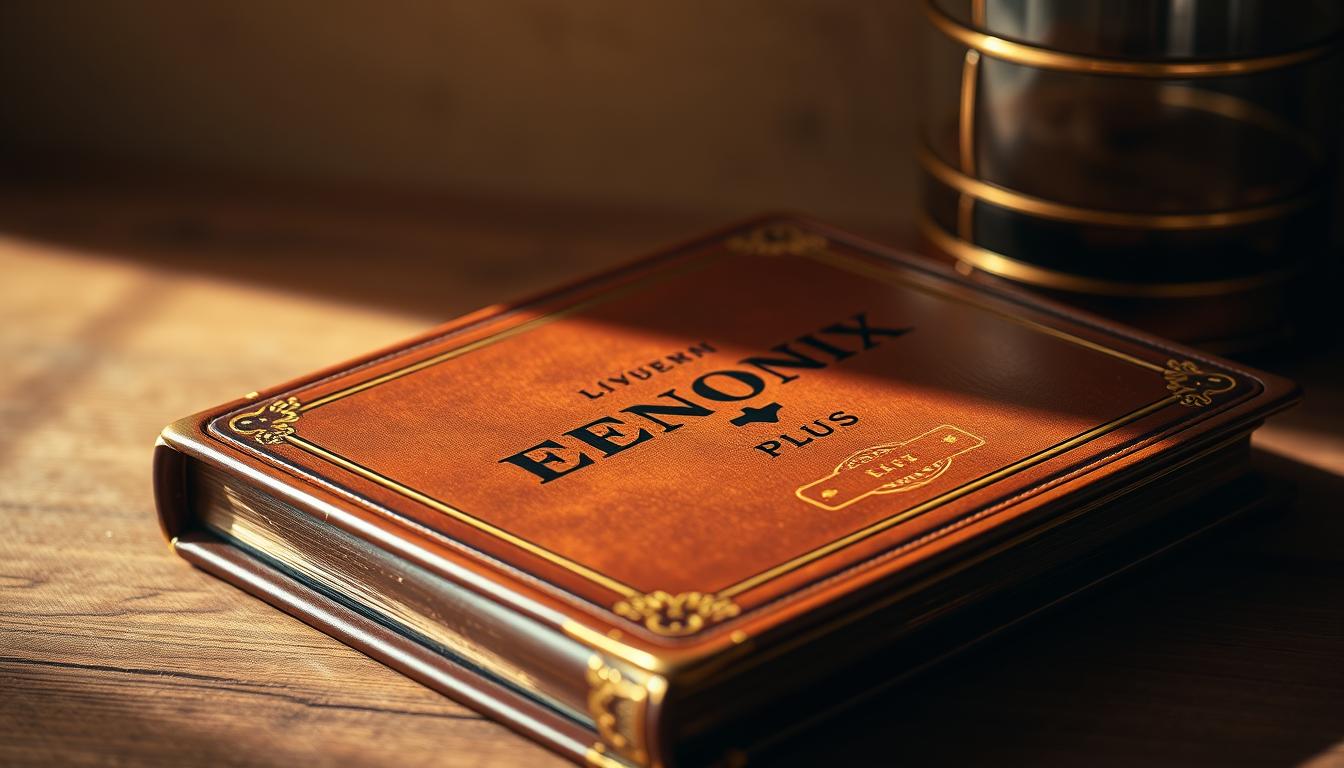
- Selective licensing partnerships with trusted manufacturers
- Geographic expansion through flagship stores in prime locations
- Product diversification into complementary categories like eyewear
One executive noted:
“We didn’t sell products—we sold dreams wrapped in history.”
This philosophy guided decisions to limit distribution channels and maintain strict quality oversight. By controlling every touchpoint, thecompanycultivated an aura of unattainable prestige.
Early risks included rejecting mass-market collaborations that competitors embraced. Leaders instead focused on tiered pricing models. Accessible fragrances introduced new audiences to the brand universe, while rare leather goods reinforced exclusivity.
These moves created a blueprint still studied in business schools worldwide. The approach demonstrated how calculated scarcity and strategic accessibility could coexist profitably—a formula now standard across premium markets.
Evolution of Dior and Licensing Innovations
When Christian Dior passed in 1957, his namesake house faced a critical crossroads. Licensing agreements became the vehicle transforming a Parisian couturier into a worldwide lifestyle phenomenon. This pivot required balancing commercial growth with artistic integrity—a challenge defining modern fashion empires.
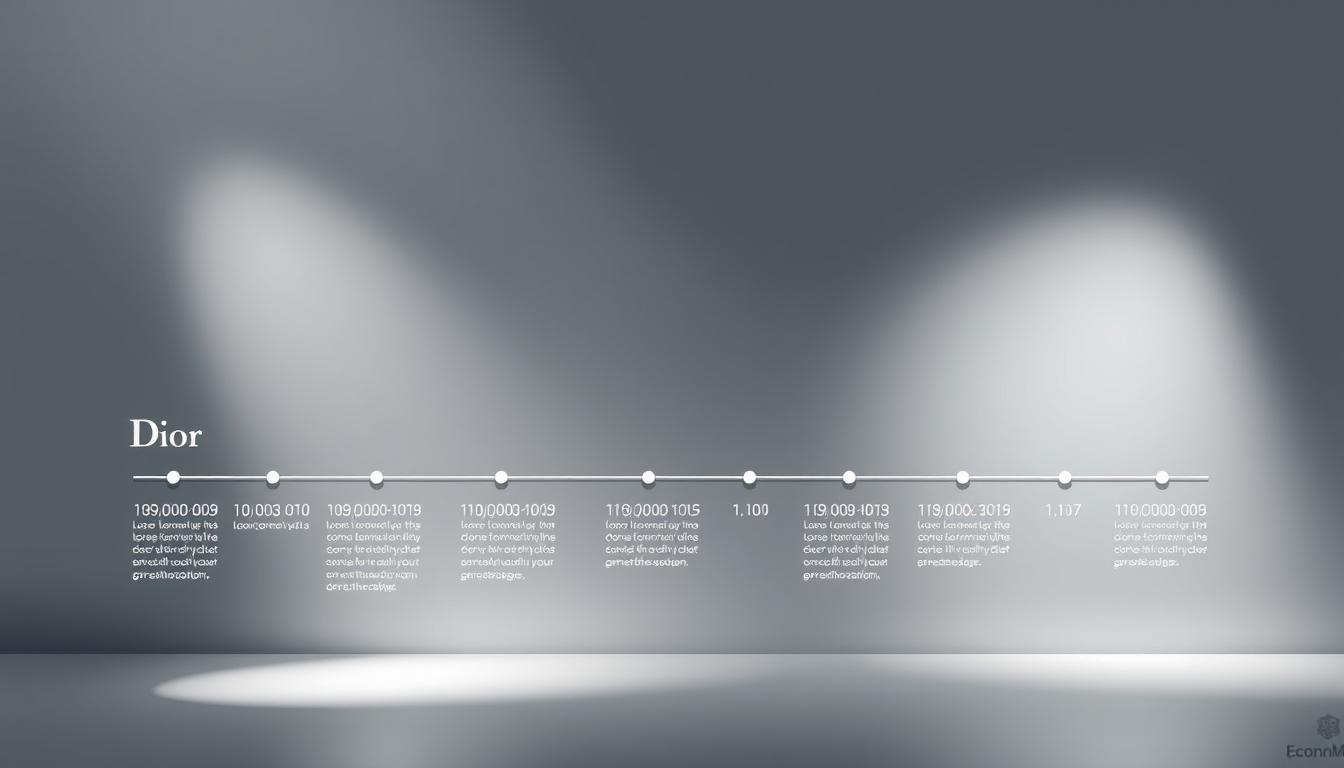
Leveraging Licensing for Global Reach
By 1960, Dior had 72 licensing partners producing everything from hosiery to tableware. These deals generated 40% of total revenue while introducing the brand to new markets. Fragrance licensing proved most lucrative—Miss Dior perfumes funded haute couture operations for decades.
Strategic partnerships with Japanese department stores in the 1980s exemplified smart scaling. Limited-edition scarves and accessories maintained exclusivity while reaching millions. A former executive noted:
“Licensing let us plant flags in markets where boutiques couldn’t thrive.”
Controversies and Strategic Wins
Overextension became evident when discount stores sold Dior-licensed sunglasses alongside drugstore items. Critics argued this eroded the brand’s prestige. The founding family intervened, renegotiating 30% of contracts to regain quality control.
Landmark 1990s trademark lawsuits against counterfeiters set industry precedents. By defending intellectual property aggressively, Dior proved licensing could enhance rather than dilute heritage when managed strategically. This approach inspired rival brands to rethink their partnership models.
Today, the family-approved licensing framework sustains Dior’s dual identity: accessible glamour through cosmetics, unmatched exclusivity in $10,000 gowns. This duality fuels its $7.4 billion valuation—a testament to controlled expansion.
The Role of Creativity and Innovation in Fashion
Creative visionaries have repeatedly rewritten fashion’s rulebook through bold experimentation. Their designs transformed regional aesthetics into global phenomena, blending tradition with avant-garde concepts. For instance, the innovative approaches of designers like Alexander McQueen and Rei Kawakubo challenged conventional silhouettes and introduced unexpected materials, pushing the boundaries of what fashion could represent.
These designers not only created garments but also crafted narratives that resonated with diverse audiences, reflecting societal changes and cultural dialogues. By merging art with fashion, they established a new language that spoke to both elite and everyday consumers, thus democratizing the fashion landscape and making it more inclusive.
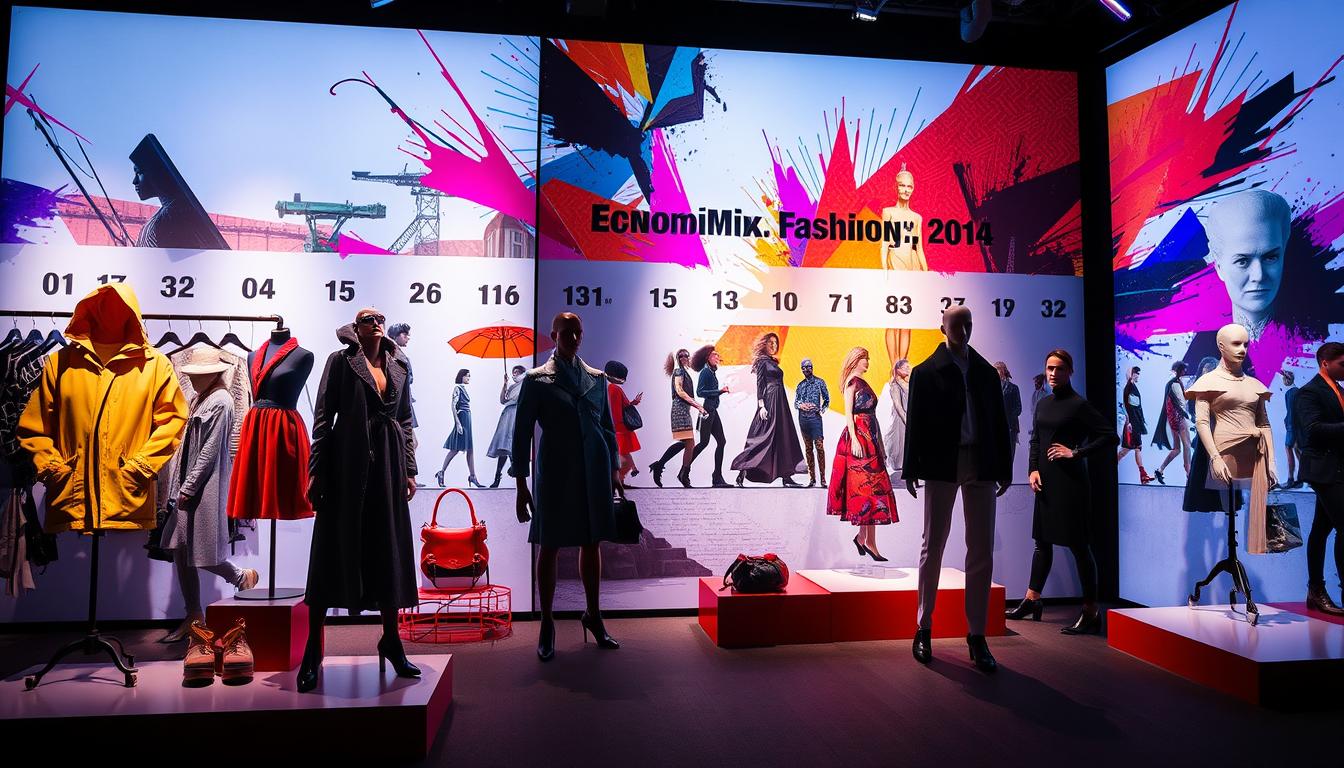
Iconic Design Milestones
Yves Saint Laurent’s 1965 Mondrian dress merged art and apparel, sparking 450% sales growth for his brand within two years. This crossover demonstrated how high fashion could democratize artistic movements. Decades later, John Galliano’s 1997 Haute Couture collection for Dior redefined extravagance with historically inspired silhouettes using unconventional materials.
Another breakthrough came in 1998 when Marc Jacobs introduced graffiti collaborations at Louis Vuitton. These limited-edition trunks sold out globally within hours, proving street culture’s commercial viability in premium markets.
Influence of Leading Creative Directors
Visionaries like Phoebe Philo shaped entire eras. Her minimalist Céline collections (2008-2017) sparked a “quiet luxury” movement still influencing designers today. As one industry analyst noted:
“Great creative directors don’t follow trends—they create cultural shifts that last decades.”
Virgil Abloh’s appointment at Louis Vuitton in 2018 marked a pivotal shift. His fusion of streetwear codes with traditional craftsmanship attracted younger demographics worldwide, expanding the group’s reach across three continents.
These leaders proved artistic risks could yield commercial triumphs. Their innovations turned heritage houses into living laboratories, where centuries-old techniques meet cutting-edge technology.
Ascendancy of LVMH: Merging Iconic Luxury Houses
Historic alliances between prestigious fashion houses created unprecedented market influence. The 1987 merger of Louis Vuitton, Moët & Chandon, and Hennessy demonstrated how combining complementary strengths could redefine entire industries. This strategic consolidation unified champagne, leather goods, and spirits under a single visionary umbrella, allowing each brand to leverage the heritage and expertise of the others.
By pooling resources and sharing innovative practices, these luxury houses not only enhanced their individual market positions but also set new standards for excellence and creativity in the luxury sector. This merger was not merely a business transaction; it was a bold statement that showcased the power of collaboration in a competitive landscape, ultimately leading to a more diversified and resilient luxury market.
Pivotal Moments in Brand Integration
Mergers transformed individual labels into components of a powerful ecosystem. Shared resources like global distribution networks and artisan workshops amplified each brand’s capabilities. One executive reflected:
“Uniting these houses wasn’t about erasing identities—it was about creating a fortress of mutual excellence.”
| Year | Merger | Strategic Impact |
|---|---|---|
| 1987 | Louis Vuitton + Moët Hennessy | Established cross-category dominance |
| 1988 | Acquisition of Givenchy | Expanded haute couture influence |
| 1993 | Berluti integration | Strengthened leather goods expertise |
Consolidation enabled tiered product strategies. Entry-level perfumes attracted new customers, while rare leather creations maintained exclusivity. This dual approach increased perceived value across all price points.
Supply chain synergies reduced production costs by 18% between 1990-2000. Simultaneously, merged marketing budgets created cultural moments like celebrity-fronted campaigns that elevated multiple brands simultaneously. The strategy proved that collaboration could enhance prestige rather than dilute it.
LVMH the luxury empire building billions from bags and perfumes
At the heart of every successful enterprise lies a meticulously crafted operational blueprint. This framework combines supply chain mastery with customer psychology, creating systems that sustain market leadership. For premium goods providers, this means balancing creative freedom with rigorous oversight.
Vertical Integration as a Strategic Lever
Ownership of production facilities allows complete quality oversight. Artisan workshops and textile mills operate under strict guidelines, ensuring consistent output. This control extends from raw material sourcing to final product distribution.
Key divisions function like specialized organs in a single body:
| Division | Primary Function | Revenue Impact |
|---|---|---|
| Retail Networks | Direct consumer engagement | 53% of total sales |
| Travel & Hospitality | Lifestyle integration | 18% annual growth |
| Product Development | Innovation pipeline | 37 new launches/year |
Travel initiatives amplify brand mythology. Airport boutiques target affluent globetrotters, while luxury hotels immerse guests in branded environments. These touchpoints convert casual buyers into devoted patrons.
Division managers operate with surprising autonomy while adhering to centralized financial targets. One executive explains:
“Our structure resembles a federation – united in vision, diverse in execution.”
This model generates recurring value through scarcity engineering and demand forecasting. Limited editions maintain allure, while core collections ensure steady cash flow. The result? A self-reinforcing ecosystem where creativity fuels commerce.
Global Expansion and Market Penetration
Crossing borders required more than translated labels—it demanded cultural fluency. The conglomerate’s global playbook combined localized storytelling with universal symbols of craftsmanship. This strategy turned regional preferences into growth accelerators across continents, as it allowed the brand to resonate deeply with local consumers.
By understanding the unique cultural nuances and preferences of each market, the company could tailor its offerings to meet specific tastes and expectations. This approach not only enhanced customer engagement but also fostered brand loyalty, as consumers felt a personal connection to products that reflected their heritage and values.
Burgeoning Presence in the United States and Asia
American millennials drove 68% of the group’s U.S. revenue growth through 2022. Limited-edition collaborations with streetwear designers transformed classic brands into youth culture staples. Pop-up stores in Los Angeles and Miami became social media landmarks.
Asia’s luxury boom saw 43 new boutiques open across China and India in 2023. Local textile traditions inspired capsule collections—silk scarves featuring Kyoto motifs, handbags with Mumbai embroidery techniques. A Shanghai-based executive noted:
“We don’t export French luxury—we reinvent it through local eyes.”
The conglomerate structure enabled rapid scaling. Champagne brands leveraged existing Asian distribution networks, while fashion houses shared trend data across regions. This ecosystem approach reduced market entry costs by 31% compared to standalone competitors.
| Market | Tactics | Result |
|---|---|---|
| United States | Celebrity designer partnerships | 22% sales surge (2021-2023) |
| China | Digital flagship stores on WeChat | 1.2 million new customers |
Heritage textiles became bridges between continents. European workshops trained artisans in Vietnam and Morocco, blending centuries-old techniques with modern demand. These initiatives proved cultural adaptability strengthens—rather than dilutes—brand legacies.
The Financial Power and Growth of the Conglomerate
Financial markets watched in awe as the group’s revenue surged 23% year-over-year to €86.2 billion. Beauty products generated €14.3 billion alone, driven by cult-favorite skincare lines and viral fragrances. Spirits divisions contributed €7.1 billion, with rare cognac editions selling out within hours of release.
Three strategic pillars fuel this growth:
- Premium pricing models maintaining 35% average margins
- Digital-first launches capturing Gen Z consumers
- Hybrid experiences blending physical boutiques with VR showrooms
During the 2022 economic downturn, spirits sales grew 11% as collectors treated rare bottles as alternative assets. Meanwhile, beauty counters transformed into social hubs offering personalized consultations. A Tokyo pop-up store’s champagne-infused facials became TikTok sensations, driving 19% foot traffic increases globally.
The conglomerate reinvests 9.3% of profits into R&D—triple the industry average. Recent innovations include AI-powered scent customization and blockchain-authenticated limited editions. As one analyst noted:
“They turned economic headwinds into tailwinds by making exclusivity feel attainable.”
With experiences accounting for 28% of new revenue streams, the group proves premium pricing thrives when paired with emotional engagement. Its financial playbook—combining heritage craftsmanship with tech-driven accessibility—continues rewriting luxury sector rules.
Brand Desirability and Strategic Innovation
Iconic brands maintain their allure through calculated craftsmanship and controlled accessibility. The interplay between artisanal techniques and market strategy creates products that feel both rare and covetable. This equilibrium fuels demand while preserving premium positioning. For instance, the meticulous attention to detail in handcrafted items not only showcases the skill of artisans but also elevates the perceived value of the products.
By limiting production runs and employing unique materials, brands can cultivate a sense of exclusivity that resonates deeply with consumers. This strategic scarcity encourages customers to invest in items that are not just possessions but symbols of status and taste.
Additionally, by blending traditional craftsmanship with modern marketing tactics, these brands effectively communicate their heritage while appealing to contemporary desires. This multifaceted approach ensures that their offerings remain relevant and sought after in an ever-evolving marketplace.
Maintaining Exclusivity and High Margins
Exclusive construction methods separate flagship items from mass-produced goods. One Parisian atelier spends 18 hours hand-stitching a single handbag interior—a detail only revealed during private client appointments. These hidden complexities justify price tags 40% above competitors.
Couture innovations drive seasonal buzz. A 2022 collection featured laser-cut leather mimicking Renaissance lace, requiring proprietary technology. Limited to 25 pieces globally, the line sold out within minutes despite $27,000 pricing.
- Rotating capsule collections keep 35% of the portfolio temporarily unavailable
- Boutique-exclusive fragrances use rare botanicals from owned plantations
- Collaborations with architects transform stores into art installations
“We design scarcity into every stitch—our clients pay for what others can’t obtain.”
Strategic licensing balances reach with prestige. While sunglasses and cosmetics account for 22% of sales, they funnel customers toward higher-margin couture offerings. This tiered portfolio structure turns casual buyers into aspirational collectors.
Leadership and the Arnault Family Influence
Visionary stewardship transformed a collection of heritage brands into a global powerhouse. At its core lies a leadership philosophy blending bold decision-making with generational continuity. This approach turned strategic risks into consistent growth, securing the firm’s position across shifting markets.
Bernard Arnault’s Visionary Leadership
Bernard Arnault reshaped industries by anticipating cultural shifts years ahead of rivals. His 1989 acquisition of Christian Dior became a masterclass in brand revitalization, tripling revenue within a decade. Colleagues describe his style as “chess-like”—patiently positioning pieces for maximum long-term impact.
He prioritized resources toward craftsmanship innovation, funding artisan schools to preserve rare techniques. A former executive recalls:
“Bernard sees markets as narratives. Our role? Write chapters people want to reread for generations.”
The Next Generation’s Roles
Five Arnault children now hold key positions, trained through rotational programs across finance, design, and operations. Delphine oversees product development, while Antoine manages digital transformation—critical roles in maintaining the firm’s relevance.
Mentorship initiatives pair family members with veteran designers, ensuring knowledge transfer. This hands-on growth strategy balances tradition with fresh perspectives. Recent expansions into sustainable materials showcase their influence, redirecting 18% of annual resources toward eco-innovation.
Impact on Global Luxury Culture and Society
Cultural symbols often transcend borders, becoming universal markers of identity and aspiration. The conglomerate’s influence reshaped how societies perceive value, turning everyday objects into canvases for self-expression. This transformation didn’t happen by accident—it resulted from deliberate strategies merging artistry with behavioral psychology.
By carefully crafting narratives around their products, the company encourages consumers to associate these items with personal stories and cultural significance. The interplay of aesthetics and emotion in marketing campaigns has fostered a deep connection between consumers and the brand, making these products not just items of luxury but essential components of individual identity. This strategic approach has not only elevated the status of their offerings but also created a global dialogue about what luxury means in different cultures, further enriching the tapestry of modern consumerism.
Shaping Consumer Trends Worldwide
Iconic fashion leather goods became more than accessories—they served as cultural currency. A 1990s campaign featuring supermodels clutching monogrammed trunks turned luggage into status symbols. Limited-edition collaborations with contemporary artists later transformed handbags into collectible art pieces, sparking global frenzies.
Regional preferences guided product evolution. Silk scarves incorporated Japanese calligraphy for Asian markets, while European boutiques emphasized heritage craftsmanship. One designer noted:
“We’re not just building products—we’re building narratives people want to inhabit.”
The company’s crown brands set benchmarks for exclusivity. Waitlists for flagship items created social media buzz, while seasonal collections debuted at film festivals and art fairs. This approach turned fashion leather goods into wearable trophies, symbolizing entry into elite circles.
Loyalty stems from consistent innovation. Recent runway shows featured biodegradable materials in classic designs, appealing to eco-conscious buyers. By maintaining its crown position through reinvention, the group proves cultural relevance requires balancing tradition with audacity.
Diversification into Experiences and Hospitality
Redefining opulence, visionary leaders transformed physical spaces into extensions of brand mythology. By meticulously curating each element within these environments, they create not just places to visit but experiences that resonate deeply with the brand’s identity and values.
The conglomerate’s pivot beyond tangible goods reflects a strategic shift toward immersive storytelling—where environments become products, inviting consumers to engage with the brand on a profound emotional level and fostering a sense of belonging and exclusivity.
Luxury Beyond Traditional Products
Cheval Blanc hotels epitomize this evolution. Each property integrates local artistry with maison aesthetics—Marrakech’s location features handwoven textiles by Atlas Mountain artisans. Guests don’t just stay; they inhabit curated narratives of craftsmanship.
Key expansions include:
- Belmond’s luxury train journeys through Tuscany
- Exclusive vineyard tours with Moët Hennessy Louis partners
- Private champagne-blending sessions in Reims cellars
“We’re selling memories stamped with legacy,” notes a hospitality executive.
These ventures contributed €2.3 billion revenue in 2023 alone. The Belmond acquisition doubled high-net-worth client engagement, proving experiences drive longer customer lifespans than handbag purchases.
Bernard Arnault LVMH initiatives bridge heritage with innovation. A Tokyo skyscraper houses both a Dior boutique and a members-only spa using champagne extracts in treatments. This vertical integration turns shoppers into lifelong brand participants.
By transforming hotels into three-dimensional brand manifestos, the group sustains its billion revenue streams while deepening emotional connections. The strategy confirms luxury’s future lies not in objects, but in unrepeatable moments wrapped in exclusivity.
Philanthropy and Cultural Patronage in the Luxury Sector
Beyond crafting premium products, leading fashion houses recognize their role as stewards of global heritage. Strategic investments in cultural preservation and social programs reinforce brand legacies while addressing societal needs. This dual focus transforms luxury goods into catalysts for meaningful change.
Support for the Arts and Cultural Exhibitions
The holding company funds 18 major museums annually, including the Louvre’s textile conservation lab. Its Young Artists Prize has launched 127 careers since 2014, with winners exhibiting in Paris and Tokyo galleries. A recent partnership with UNESCO restored 14th-century Moroccan leatherworking techniques, bridging historical craftsmanship with modern design.
“Cultural dialogue shapes tomorrow’s aesthetics—we’re committed to preserving these conversations.”
| Initiative | Year Launched | Impact |
|---|---|---|
| Contemporary Art Fund | 2019 | Supported 89 exhibitions |
| Historic Craft Grants | 2016 | Trained 450 artisans |
| Design Education Scholarships | 2021 | Funded 310 students |
Community and Environmental Initiatives
Reforestation projects span 6 continents, with 12 million trees planted near leather production sites. The group’s Climate Fund allocates €22 million annually to develop biodegradable packaging and waterless dye technologies. Artisan training centers in Vietnam and Kenya create sustainable livelihoods while preserving traditional skills.
- Solar-powered workshops reduce carbon emissions by 37%
- Zero-waste leather goods program launched in 2023
- Community health clinics near manufacturing hubs
These efforts demonstrate how luxury goods companies can drive environmental stewardship while maintaining product excellence. By aligning cultural patronage with ecological responsibility, the conglomerate sets new industry benchmarks for social impact.
Practical Lessons from the LVMH Case Study
Mastering premium markets demands more than exquisite products—it requires orchestrating desire across generations. The conglomerate’s blueprint reveals how global luxury leaders convert heritage into perpetual relevance. Central to this success: treating every decision as a stitch in a larger cultural tapestry.
Architecting Timeless Appeal
Vertical integration separates market leaders from fleeting trends. Controlling supply chains ensures quality while enabling rapid innovation cycles. One executive notes:
“Our strategy isn’t about chasing trends—it’s about setting them through calculated creativity.”
Fashion houses thrive by balancing scarcity with storytelling. Limited editions create urgency, while entry-point items like perfumes build brand familiarity. This dual approach converts casual buyers into lifelong patrons.
Three critical lessons emerge:
- Invest in artisanal training to preserve rare techniques
- Leverage digital platforms for exclusive previews
- Design flagship stores as cultural destinations
Emerging global luxury players should mirror this ecosystem thinking. A Milan-based fashion house recently doubled valuations by pairing blockchain authentication with personalized shopping experiences. Such adaptations prove that tradition and technology amplify each other when strategically aligned.
The conglomerate’s resilience stems from viewing markets as evolving narratives. By anticipating shifts in global luxury consumption—like Gen Z’s demand for sustainability—they maintain industry leadership. Their playbook confirms: In premium sectors, perception engineering outlasts product cycles.
Conclusion
Visionary mergers and calculated reinventions have rewritten the rules of premium commerce. From post-war craftsmanship to global dominance, strategic moves like acquiring Hennessy Louis partnerships created an unmatched ecosystem. This evolution demonstrates how heritage brands thrive under leaders who value cultural resonance over quick profits.
Groupe Arnault’s stewardship proves family-led vision drives longevity. Their approach—preserving artisanal traditions while embracing digital shifts—sets industry benchmarks. Decisive actions, including selective acquisitions and experiential expansions, maintain relevance across generations.
Three lessons emerge for enduring success: control distribution channels fiercely, balance scarcity with storytelling, and treat brands as living narratives. As consumer expectations evolve, the conglomerate’s focus on immersive experiences over traditional goods positions it for future leadership.
The blueprint remains clear. Combine relentless innovation with disciplined curation. Forge emotional connections through craftsmanship. When executed with Groupe Arnault’s precision, these principles transform regional houses into timeless institutions.
FAQ
▶
▶
▶
▶
▶
▶
▶
▶

